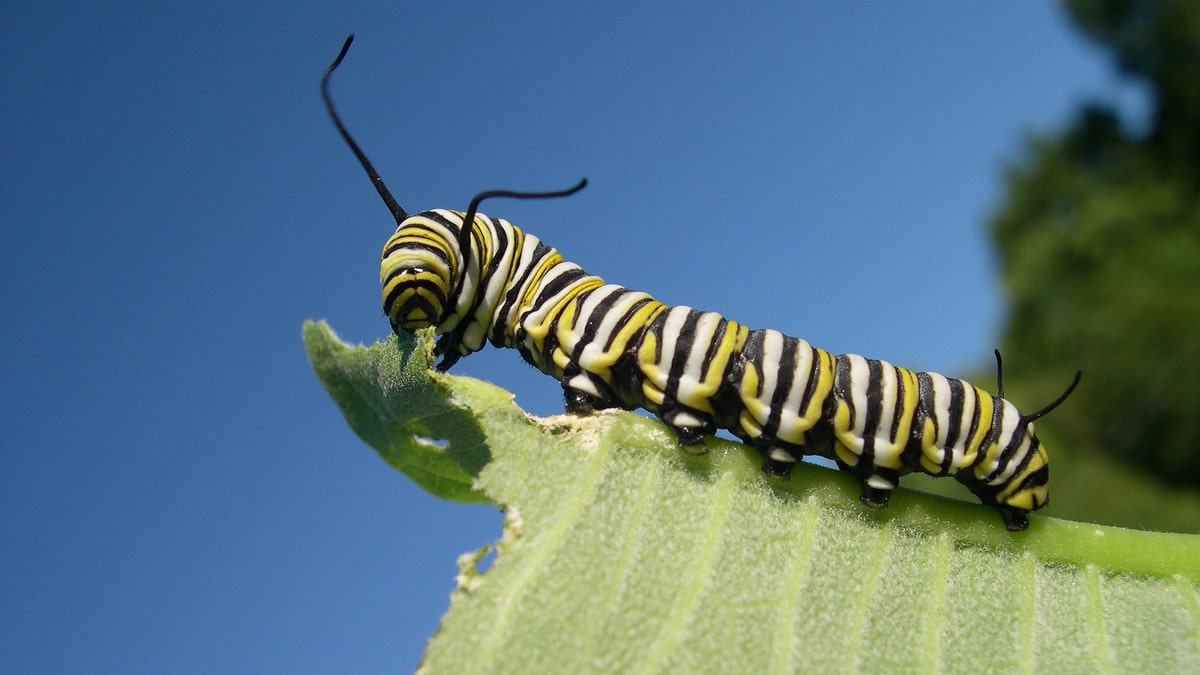
Monarch caterpillar eatin milkweed (AttaBoyLuther)
Sure, bugs can be considered one of the world’s healthiest foods because they're eaten as a healthy source of protein. But in most places, the people who are eating them know they’re eating them. That’s not the case here in the United States, where we’re still a bit squeamish about eating insects as our sole source of protein. In a lax food-safety loophole, the Food and Drug Administration (FDA) has decided that allowing insects like mites and maggots is perfectly acceptable, to a degree, provided they don’t hinder the “aesthetic” quality of foods. Aesthetic or not, do you want to eat caterpillars? In the United States, it’s estimated that the average person unintentionally eats a pound of insects every year. Here are a few of the more disgusting bugs sneaking into your food.
(No room? No problem! Grow tomatoes in the driveway, dill on the deck, and peppers on the porch with Edible Spots & Pots!)
Thrips
At anywhere from 1/25 to 1/8 of an inch long, these tiny little winged parasites are legally allowed in apple butter, canned or frozen asparagus, frozen broccoli, and frozen Brussels sprouts.
Related: 8 Times You Should Never Use Coconut Oil
Aphids
Those same little green or black bugs that can destroy a bouquet of flowers can infiltrate your frozen veggies, particularly spinach, broccoli, and Brussels sprouts. And if you home-brew beer, you might consider growing your own hops: The FDA legally allows 2,500 aphids for every 10 grams of hops. (And they’re just one of the 10 most destructive garden insects…)
Mites
These tiny white bugs are common in wheat and other grains that have been stored for a while, but expect to eat a few with your frozen vegetables. If you have indoor allergies, that could be a problem, because storage and grain mites can cause the same type of allergic reaction as the dust mites common in homes.
Maggots
If you’ve ever eaten canned food, you’ve probably also eaten a maggot. These disgusting little critters abound in things like canned mushrooms, canned tomatoes, tomato paste, and pizza sauces, as well as fresh, frozen, or Maraschino cherries. Mushrooms are by far the worst: 20 maggots are allowed for every 100 grams of drained mushroom and five for every 500 grams of tomato products.
Fruit Flies
Buy a piece of fruit covered in fruit flies and you can wash them off. Buy a can of citrus juice and you’ll be swilling five fruit flies with every eight-ounce cup of juice. Grab an eight-ounce handful of raisins and you could be eating as many as 35 fruit-fly eggs. (Fruit flies are SO annoying; here’s how to banish them for good.)
Corn Ear Worms
Corn is notoriously difficult to grow organically being that it’s so prone to insect infestations. But in most cases, it’s easy to avoid eating the earworms that burrow into corncobs and eat the silk—just cut the kernels off the cob and voilà, bug-free veggies. However, canned sweet corn will come with some extra crunch from all the larvae, skins, and skin fragments allowed by the FDA.
Cowpea Curculio
Love black-eyed peas? Buy them dried and cook them yourself rather than buying them frozen or canned. A can of black-eyed peas, cowpeas, or field peas may contain an average of five or more cowpea curculio larvae, which will grow into dark brown, beetle-like weevils that infest all manner of peas and beans.
Related: 10 Gross Ingredients Lurking In Your Energy Bars
Caterpillars
Fuzzy, ugly caterpillars are supposed to turn into beautiful butterflies for people to marvel at—not eat in a mouthful of frozen spinach. But along with the 50 or so aphids, mites, and thrips allowed in 100 grams of spinach, you may also find yourself munching on caterpillar larvae and larval fragments.
